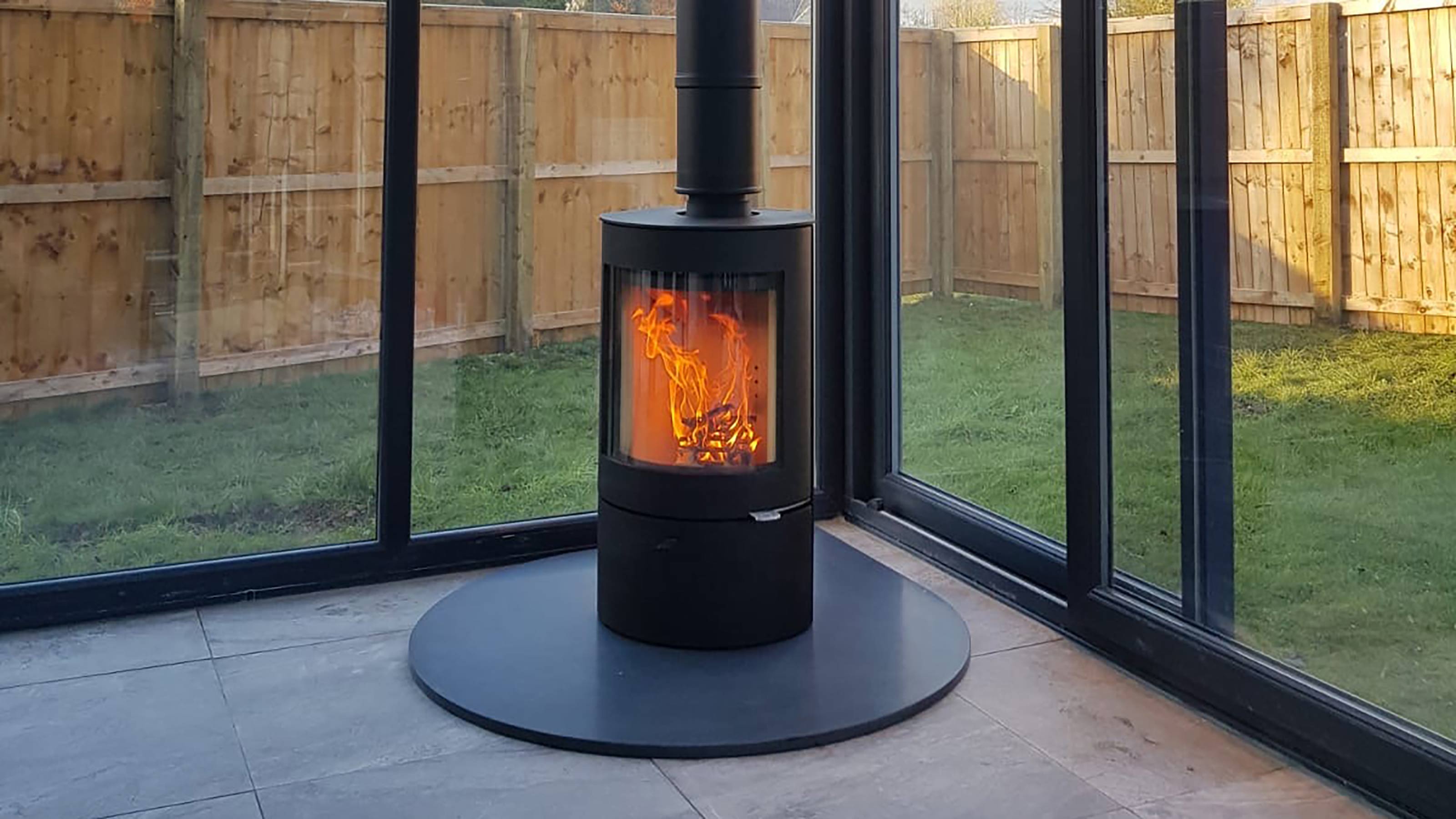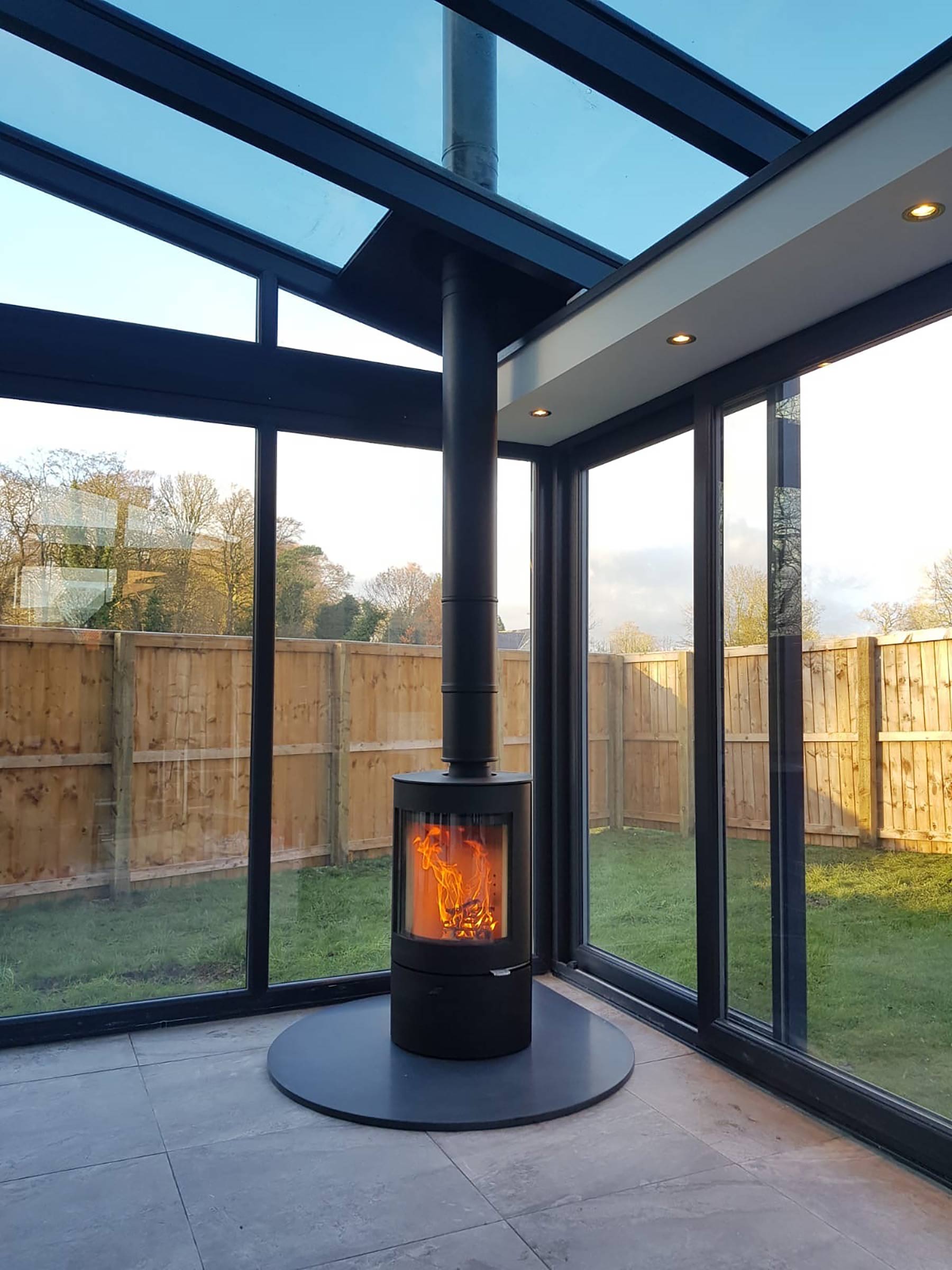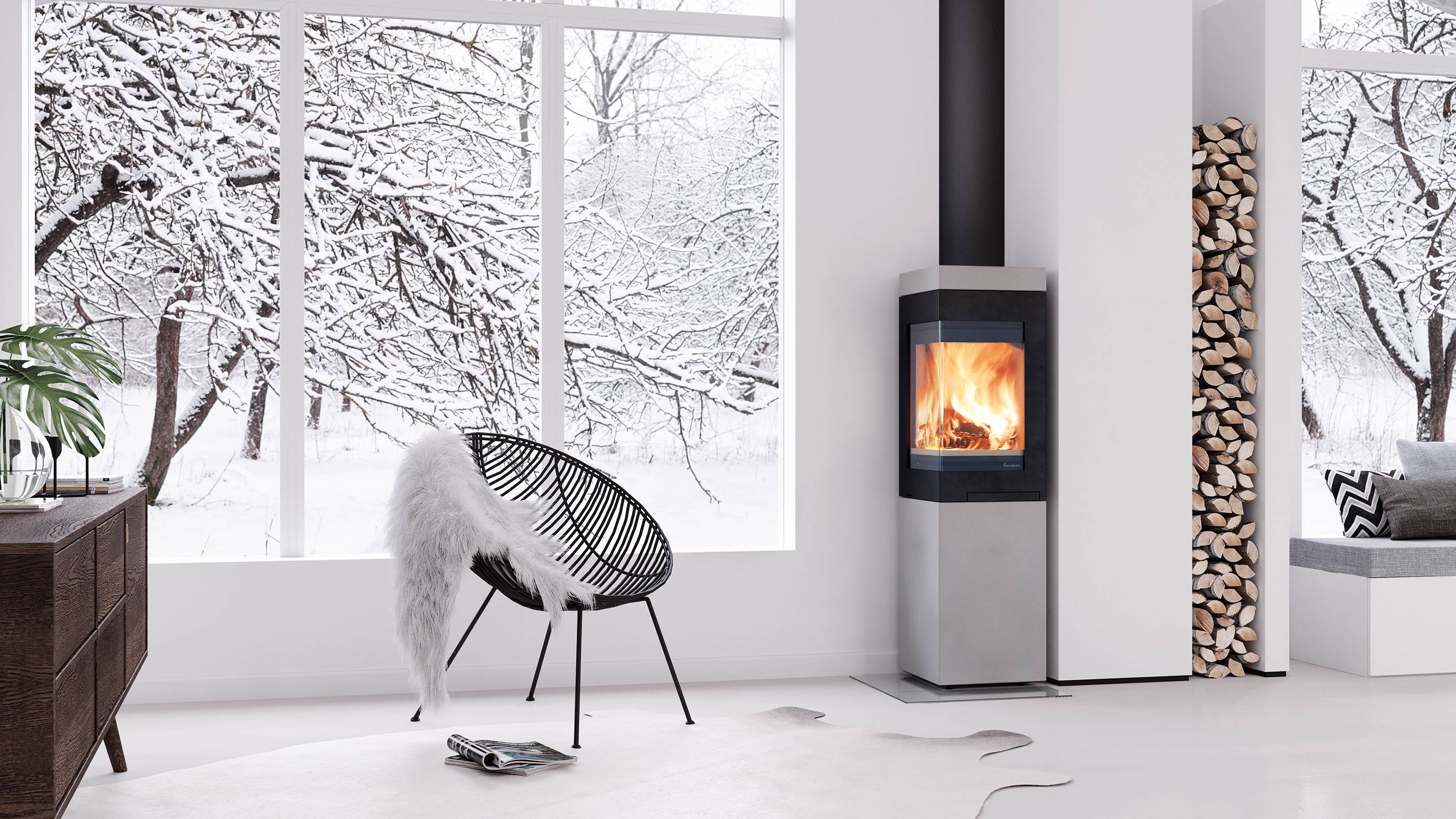Log burners in conservatories: Are they really a good idea?
Log burners in conservatories make cosy focal points but is installing one in this space really such a smart idea? We look at the practicalities and how to ensure it is a success

Fitting log burners in conservatories is a popular job thanks to the warmth and character they can bring to what can sometimes be a physically and visually cold space.
Log burning stoves are now one of the most sought-after features by homeowners, throwing out impressive amounts of heat quickly and being available in a huge range of styles to suit pretty much any setting, from traditional spaces to highly contemporary modern homes — but how well do they perform in conservatories and is it practical to install one in this room?
Here, we take a look at the ins and outs of installing a wood burning stove in a conservatory, which models are recommended by the experts and what to do if your conservatory has no chimney.
Are log burners in conservatories a good idea?
Conservatories can become chilly spots in the winter months so a good, well-planned heat source is essential if you want to enjoy the space all year round.
"In the UK, the conservatory becomes an unusable room in the winter months," says Annabelle Carvell from Stovax. "Having a log burner in the conservatory changes all that — even during the cooler evenings for the rest of the year, they can inject a little heat into the room without the need to turn on any central heating."
Is it safe to install log burners in conservatories?
There is no reason why you should not incorporate a log burning stove into your conservatory ideas, although, just as when fitting one into any space, it is essential to choose the right size and style of model for your space.
“Conservatories can often be cold during the winter months, so installing a wood burning or multi fuel stove is an efficient heating solution that will also add cosiness to the space,” says Jon Butterworth, Director at Arada Stoves. “What type and size of stove you install and the position of it will vary from home to home, so always speak to a professional installer before you purchase your stove.”
There are no special building regulations that specifically relate to installing a wood burner in a conservatory, but you should still make yourself aware of the building regulations for chimneys, stoves and fireplaces as these will apply.
Of particular note are the following regulations:
- Your stove pipe must be at least 425mm away from any flammable materials.
- Your stove must be placed on a hearth that is at least 12mm thick and large enough to extend 300mm at the front and 150mm either side of the stove.
- If you have chosen a stove that is over 5kW, you will need a 550mm2 sized ventilation hole.
Can you have a log burner without a chimney?
It is rare for conservatories to have chimneys but this does not mean you can’t still fit a log burner without a chimney.
There are a couple of ways around the problem. The most common is to fit a stove with a twin wall chimney flue. Twin wall flue systems – also known as pre-fabricated chimney systems – consist of a series of connectable stainless steel pipes, which are wrapped in insulation. The pipes sit inside an outer tube so that the temperature inside the flue is kept warm enough to draw the fumes through the pipe before they are expelled outside.
“It is very unlikely that your conservatory will have a chimney, so it is common for homeowners to install free-standing stoves, meaning the flue is exposed within the room before it passes through to the outside – either via a wall or the roof,” explains Jon Butterworth. “A twin wall flue will be required, but again, do speak to a professional before the installation process begins."
Stovax's Annabelle Carvell agrees: "It is best to discuss your options with your fitter as conservatories come with different material roofs such as glass, plastic and tile. There are innovative roof flashings on the market that are suitable for non-standard roof finishes."

What is the best spot for a log burner in a conservatory?
With walls of glass and often large glazed doors, it can be difficult to find a good spot to locate a wood burning stove in a conservatory so this is likely to require some careful consideration.
In general, locating your stove on a wall shared with your house is a convenient solution, meaning the flue will be well supported — do bear in mind though that the flue will need to terminate at least 1m above your house’s guttering so that fumes can be expelled safely.
“The stove's flue will need to exit the conservatory somewhere which usually means exchanging the existing roof panel with a non-glass section panel,” explains Jon Butterworth. “Speak to your conservatory manufacturer about these panels. If the flue is installed close to the house, bear in mind that the flue terminal will need to be positioned 2.3 metres from any opening window, with the flue extending 1 metre above your roof ridge.”
"Try to keep stoves away from combustible materials and doors and also consider whether a prefabricated metal chimney can be short and self-supporting (within regulations), or whether it needs to be attached to the main building wall to get past the roof level," says Annabelle Carvell.

Which types of stove is best for a conservatory?
There are many different types of stoves suitable for conservatories and the one you choose should be based on a number of factors. If you have a chimney, or are happy to fit a twin-walled system, you will have more choice.
Those living in a smokeless zone or who would prefer not to go to the trouble and expense of fitting a new flue system might like to consider some log burner alternatives, such as electric stoves, gas stoves and bioethanol fires.
Electric stoves are popular in conservatories for good reason — they are a doddle to install (simply plug them in) and require no chimney.
Gas stoves are ideal for those after a more realistic flame effect — although you will need a gas supply and to ensure you are meeting the ventilation requirements. You will also need to find a Gas Safe registered engineer to install one.
Bioethanol fireplaces come in some really eye-catching designs and require no chimney or specialist fitting. That said, their heat output is not as high as log burning or gas stoves.
"Conservatories generally have a fairly high heat loss, but you do not want them to overheat either — it is better to drive a stove hard rather slumber it, so for most installations a 5kW appliance will be more than enough for the majority of the year," explains Annabelle Carvell.
Get the Homebuilding & Renovating Newsletter
Bring your dream home to life with expert advice, how to guides and design inspiration. Sign up for our newsletter and get two free tickets to a Homebuilding & Renovating Show near you.
Natasha was Homebuilding & Renovating’s Associate Content Editor and was a member of the Homebuilding team for over two decades. In her role on Homebuilding & Renovating she imparted her knowledge on a wide range of renovation topics, from window condensation to renovating bathrooms, to removing walls and adding an extension. She continues to write for Homebuilding on these topics, and more. An experienced journalist and renovation expert, she also writes for a number of other homes titles, including Homes & Gardens and Ideal Homes. Over the years Natasha has renovated and carried out a side extension to a Victorian terrace. She is currently living in the rural Edwardian cottage she renovated and extended on a largely DIY basis, living on site for the duration of the project.

